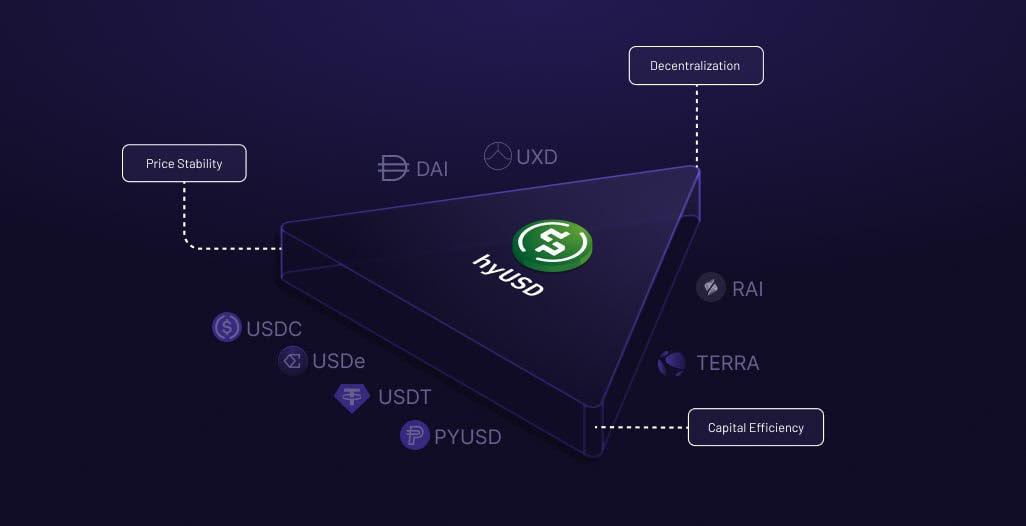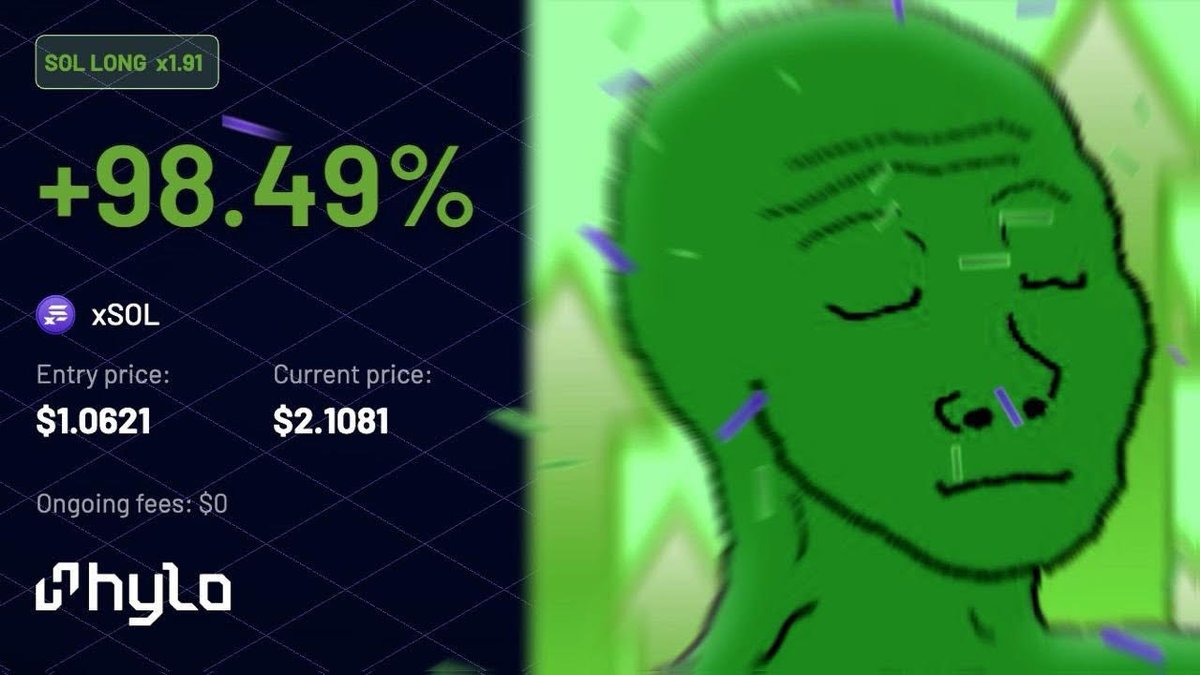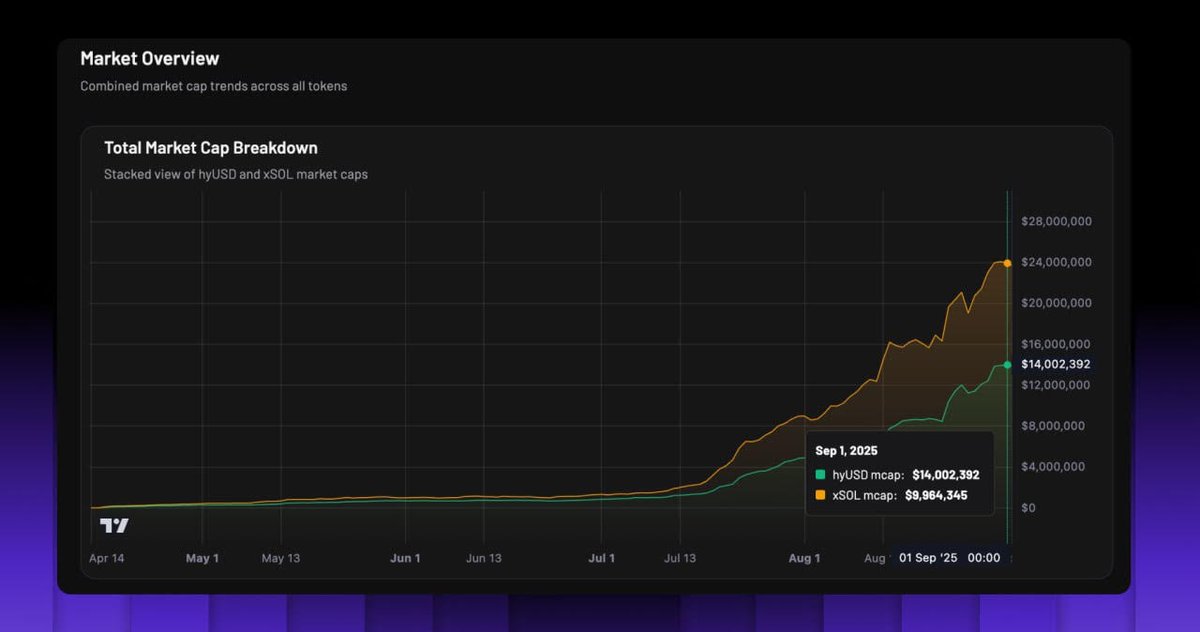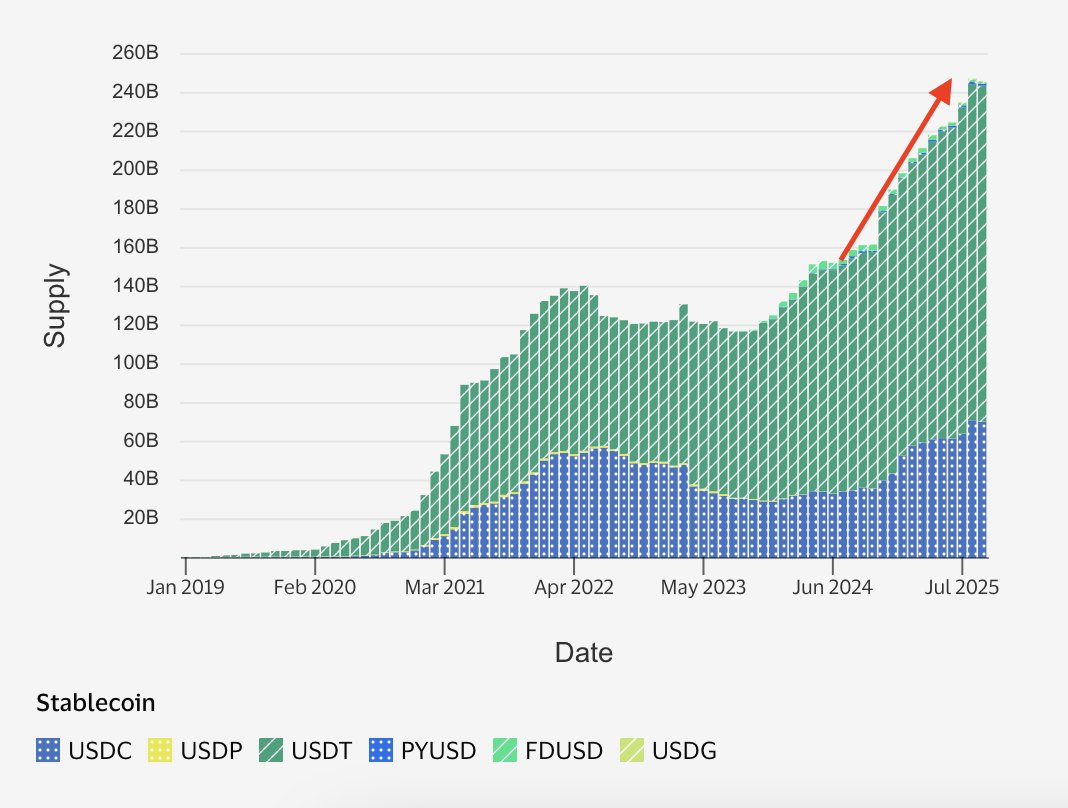PayPal USD价格
(阿联酋迪拉姆)AED3.668
AED0.00 (+0.00%)
AED
无法搜索到该币种。请检查您的拼写或重新搜索币种名称。
市值
AED43.82亿
流通总量
11.94亿 / 11.94亿
历史最高价
AED18.36
24 小时成交量
AED2.07亿
4.2 / 5


了解PayPal USD
免责声明
本页面的社交内容 (包括由 LunarCrush 提供支持的推文和社交统计数据) 均来自第三方,并按“原样”提供,仅供参考。本文内容不代表对任何数字货币或投资的认可或推荐,也未获得欧易授权或撰写,也不代表我们的观点。我们不保证所显示的用户生成内容的准确性或可靠性。本文不应被解释为财务或投资建议。在做出投资决策之前,评估您的投资经验、财务状况、投资目标和风险承受能力并咨询独立财务顾问至关重要。过去的表现并不代表未来的结果。您的投资价值可能会波动,您可能无法收回您投资的金额。您对自己的投资选择自行承担全部责任,我们对因使用本信息而造成的任何损失或损害不承担任何责任。提供外部网站链接是为了用户方便,并不意味着对其内容的认可或控制。
请参阅我们的 使用条款 和 风险警告,了解更多详情。通过使用第三方网站(“第三方网站”),您同意对第三方网站的任何使用均受第三方网站条款的约束和管辖。除非书面明确说明,否则欧易及其关联方(“OKX”)与第三方网站的所有者或运营商没有任何关联。您同意欧易对您使用第三方网站而产生的任何损失、损害和任何其他后果不承担任何责任。请注意,使用第三方网站可能会导致您的资产损失或贬值。本产品可能无法在所有司法管辖区提供或适用。
请参阅我们的 使用条款 和 风险警告,了解更多详情。通过使用第三方网站(“第三方网站”),您同意对第三方网站的任何使用均受第三方网站条款的约束和管辖。除非书面明确说明,否则欧易及其关联方(“OKX”)与第三方网站的所有者或运营商没有任何关联。您同意欧易对您使用第三方网站而产生的任何损失、损害和任何其他后果不承担任何责任。请注意,使用第三方网站可能会导致您的资产损失或贬值。本产品可能无法在所有司法管辖区提供或适用。
PayPal USD 的价格表现
近 1 年
--
--
3 个月
-0.04%
AED3.67
30 天
-0.02%
AED3.67
7 天
+0.00%
AED3.67
PayPal USD 社交媒体动态

如果我们真的希望稳定币取代法币,我们需要对稳定币强制实施链上储备证明,以便我们能够实时检查支持资产。
主要的中心化稳定币仅提供每月的认证,这带来了风险,这也是为什么 $tether 有时价值 .998$ 而不是 1 USD 的原因。我们需要完全透明以促进采用,不幸的是,像 $DAI 这样的链上稳定币并没有赢得这场战斗。
请看下面那些不进行实时认证的大型稳定币。
USDT (Tether) – 来自审计师(BDO Italia)的每月认证报告。没有链上储备证明。
USDC (Circle) – 每月认证(自2023年1月起由德勤提供)。没有直接的链上银行余额证明。
BUSD (Binance USD) – 由Paxos发行,附有认证;发行将在2024-2025年逐渐结束。
USDP (Pax Dollar, 由Paxos发行) – 每月认证。没有链上证明。
PYUSD (PayPal USD, 由Paxos发行) – 与上述相同(Paxos进行认证)。
GUSD (Gemini Dollar) – 由BPM LLP进行每月认证。没有链上证明。
HUSD – 之前由储备支持,但遇到监管/运营问题。没有透明的链上证明。
EURC (Euro Coin, Circle) – 每月认证。没有链上证明。
EUR Tether – 认证,没有链上证明。
Stasis EUR (EURS) – 由外部公司进行每月审计。没有链上证明。
USD1 (World Liberty Financial USD) – 中心化,离线支持(类似模型)。
其他法币支持的企业问题(FDUSD, RLUSD等) – 中心化,仅有认证。

Renaud Partners 深度分析:Hylo
为什么选择 Hylo?
在 Renaud Partners,我们的核心目标之一是支持 Solana 生态系统的增长,已经超过五年。@Hylo_so 反映了这一愿景:它是 Solana 原生的,无需许可,并且设计上能够与链一起扩展。
我们早期支持 Hylo,因为他们是我们认识多年的 Solana OG,而他们正在创建的产品 hyUSD 和 xSOL 是增强整个生态系统的基础性工具。
稳定币和杠杆将始终是链上金融的支柱。Hylo 正在以去中心化、可扩展且独特的 Solana 方式构建它们。这就是我们支持他们的原因。
让我们深入了解。
Hylo:解决稳定币三难问题
稳定币是链上经济的基础。仅在 2024 年,它们就促进了超过 23 万亿美元的交易,超过了 Visa 和 Mastercard 的总支付量,并占据了 DEX 和 CEX 上绝大多数的交易。它们在 DeFi 协议中的 TVL 中始终占据 20-40% 的比例。
对于许多用户来说,稳定币是他们接触的第一个也是唯一的加密产品。
但今天主导的稳定币是中心化的。USDC 和 USDT 由国债和银行存款作为抵押,使它们暴露于美联储的政策和监管者的政治之下。它们承载着无法对冲的保管风险:银行账户随时可能被冻结或被查封。而且,尽管发行者从支持资产中获取收益,用户却没有任何收益,只有尾部风险。最近的历史表明,中心化控制意味着中心化干预:冻结地址、阻止交易和限制访问。
DeFi 承诺了一个开放、无需许可的金融系统。然而,推动它的资金仍然由少数几家公司控制。
稳定币三难问题
去中心化的替代方案存在,但它们都在稳定币三难问题上挣扎:你只能实现三种属性中的两种:价格稳定性、去中心化和资本效率。
- 抵押债务头寸(如 Maker 的 DAI)是稳定和去中心化的,但需要大量的超额抵押。这会扼杀可扩展性。
- 算法稳定币承诺效率,但以壮观的方式崩溃,UST 展示了这些系统的脆弱性。
- 合成美元(如 Ethena 的 USDe)是稳定和资本高效的,但它们依赖于中心化交易所和复杂的对冲策略,这削弱了去中心化。
目前还没有去中心化的稳定币在可持续扩展的同时解决三难问题。
我们看好 Hylo 的原因
Hylo 正在尝试一种不同的方法:构建一个原生的 Solana 稳定币系统,使用两个代币:hyUSD 和 xSOL,它们相辅相成。Hylo 不依赖国债或合成对冲,而是使用流动质押代币作为链上抵押。这直接从网络中解锁收益,同时保持系统完全去中心化。
我们看好 Hylo,因为它解决了 DeFi 中的两个最大缺口:
- 一个真正去中心化的稳定币,不依赖于银行、保管人或链下抵押。hyUSD 是抗审查的、资本高效的和可扩展的,完全不是 USDC。
- 一个长期杠杆产品,无需资金利率、清算风险或持续的头寸管理。xSOL 提供对 SOL 的动态敞口,具有协议管理的再平衡,使杠杆对长期策略变得可行。
这种组合是独特的。稳定币是粘性的,因为它们是安全的。杠杆产品是有吸引力的,因为它们是有风险的。通过将两者结合成一个系统,Hylo 创造了平衡:hyUSD 的稳定性得到了保护,因为 xSOL 吸收了波动性,而 xSOL 持有者则从 Solana 的增长和验证者收益中受益。
Hylo 的运作方式
两个代币,一个池:一篮 Solana LST 支持 hyUSD 和 xSOL。抵押池的总价值始终等于 hyUSD + xSOL 市值之和。
hyUSD:与 $1 挂钩,稳定、可扩展且产生收益。完全由链上资产支持,没有保管风险。可以随时无滑点赎回。
xSOL:对 SOL 的代币化杠杆多头头寸,没有资金成本、没有清算和协议管理的再平衡。当 SOL 升值时,持有者捕获放大的收益。
动态杠杆:xSOL 的杠杆比率根据供应和活动进行调整。铸造 hyUSD 会增加 xSOL 的有效杠杆,赎回则降低杠杆。这使得系统自我平衡。
原生收益:LST 持续产生收益。这些收益流入 hyUSD 的稳定池,用户在质押 hyUSD 时通常可以获得 2 到 3 倍的 SOL 基础收益,同时保持 delta 中性,这是目前 Solana 上最高的稳定币收益(15-20% APY)。
结果是一个双代币系统,其中:
- hyUSD 持有者获得一个稳定、抗审查的美元,由 Solana 的安全性和收益支持。
- xSOL 持有者获得简单、被动的杠杆,而无需担心清算或资金费用的持续压力。
为什么这很重要
稳定币是 DeFi 的核心,但它们是中心化和剥削性的。杠杆是交易量的命脉,但在当前形式下效率低下且风险高。Hylo 重新构建了这两者。
- hyUSD 可以超越 CDP 的限制,为 Solana DeFi 提供深度、无滑点的流动性。
- xSOL 以一种对长期投资者真正可用的方式提供杠杆敞口,而不仅仅是日内交易者。
- 两者结合,创造了一个资本高效、去中心化并与 Solana 精神相一致的系统。
随着数十亿 SOL 被质押以及对稳定资产和杠杆的需求不断增长,Hylo 正在构建 DeFi 实际需要的产品。
而早期的增长反映了这种需求:Hylo 的总锁定价值已经超过 2400 万美元,近 1400 万 hyUSD 已发行,超过 1000 万的 xSOL 供应,以及接近 1100 万的稳定池质押。协议费用迄今已超过 36 万美元,清楚地表明使用量正在加速。



快捷导航
PayPal USD购买指南
开始入门数字货币可能会让人觉得不知所措,但学习如何购买比您想象的要简单。
预测 PayPal USD 的价格走势
PayPal USD 未来几年值多少?看看社区热议,参与讨论一波预测。
查看 PayPal USD 的价格历史
追踪 PayPal USD 代币的价格历史,实时关注持仓表现。您可以通过下方列表快捷查看开盘价、收盘价、最高价、最低价及交易量。

PayPal USD 常见问题
目前,一个 PayPal USD 价值是 AED3.668。如果您想要了解 PayPal USD 价格走势与行情洞察,那么这里就是您的最佳选择。在欧易探索最新的 PayPal USD 图表,进行专业交易。
数字货币,例如 PayPal USD 是在称为区块链的公共分类账上运行的数字资产。了解有关欧易上提供的数字货币和代币及其不同属性的更多信息,其中包括实时价格和实时图表。
由于 2008 年金融危机,人们对去中心化金融的兴趣激增。比特币作为去中心化网络上的安全数字资产提供了一种新颖的解决方案。从那时起,许多其他代币 (例如 PayPal USD) 也诞生了。
查看 PayPal USD 价格预测页面,预测未来价格,帮助您设定价格目标。
深度了解PayPal USD
PayPal USD (PYUSD) 是一种由美元支持的稳定币。它保持与美元 1:1 的价值,确保稳定性。用户可以通过 PayPal 平台购买、出售、持有和转移 PYUSD。它兼容以太坊和 Solana 区块链。
ESG 披露
ESG (环境、社会和治理) 法规针对数字资产,旨在应对其环境影响 (如高能耗挖矿)、提升透明度,并确保合规的治理实践。使数字代币行业与更广泛的可持续发展和社会目标保持一致。这些法规鼓励遵循相关标准,以降低风险并提高数字资产的可信度。
市值
AED43.82亿
流通总量
11.94亿 / 11.94亿
历史最高价
AED18.36
24 小时成交量
AED2.07亿
4.2 / 5

































